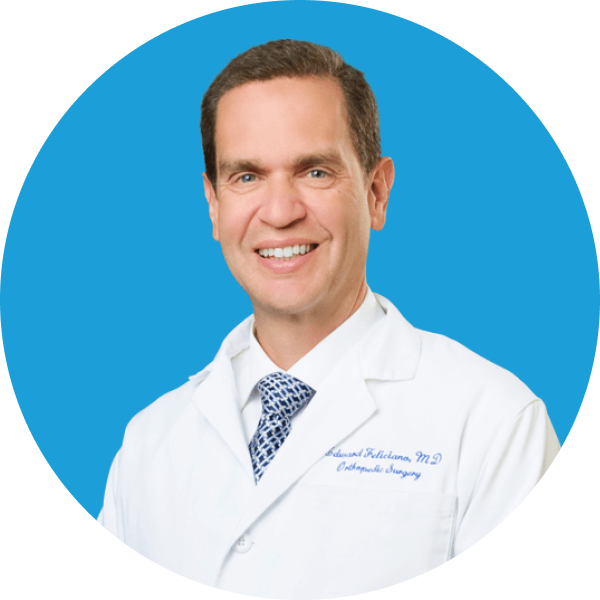Shoulder Conditions
From scratching your back to playing sports, shoulders provide the human body with an exceptionally wide variety of movements. At the same time, however, this flexibility and range of motion make the shoulders increasingly susceptible to instability and injury, especially from sports, physical labor, or accidents. The shoulder is also prone to arthritis and inflammation from wear and tear over time.
Shoulder injuries can be very painful, making it hard to move and go about your daily activities. Some injuries are only painful with movement, while others are constantly painful even when at rest.
We Specialize In Treating
Frozen Shoulder
Rotator Cuff Tear
Shoulder Bursitis
Shoulder Impingement
Shoulder Labral Tear
Shoulder Pain/Injury
All Shoulder Conditions
- Adhesive Capsulitis
- Bankart Lesion
- Bicep Tendonitis
- Broken Collarbone
- Shoulder Dislocation
- Frozen Shoulder
- Muscle Trigger Points
- Rotator Cuff Injury
- Rotator Cuff Tendinitis
- Shoulder Arthritis
- Shoulder Bursitis
- Shoulder Fracture
- Shoulder Impingement
- Shoulder Instability
- Shoulder Labral Tear
- Shoulder Pain/Injury
- Shoulder Separation
- Shoulder Sprain/Strain
- Shoulder Tendonitis
- SLAP Tear
- Sports Injuries
- Sternoclavical Joint Dislocation
- Throwing Injuries
Get Advanced Shoulder Care
Right In Your Neighborhood
Finding the treatment that’s right for your shoulder problem is our focus at The Orthopedic Health Center. We use non-surgical treatments whenever possible. When you do need surgery, our expert surgeons help you heal faster and with less pain. All right in your Hudson County neighborhood.
Anatomy of the Shoulder
One of the most dynamic parts of the body, the shoulder’s structure consists of bones, joints, muscles, and other tissues to help you navigate and manipulate your environment. There are three bones that form the shoulder:
- The clavicle: also referred to as the collarbone, this S-shaped bone runs along the front of the body from the sternum to the shoulder blade (or scapula).
- Scapula: frequently referred to as the shoulder blade, the scapula is a triangular-shaped bone that connects the upper arm (or humerus) to the clavicle.
- Humerus: also known as the upper arm, the humerus is one of the longest bones in the body. It provides support and structure for the arm.
These three bones, along with the sternum, come together to form three joints:
- The glenohumeral joint: this is the primary joint of the shoulder where the humerus bone fits into the scapula like a ball in a socket, facilitating the arm’s ability to move in a circular motion.
- The acromioclavicular (AC) joint: the point at which the clavicle and scapula meet. The AC joint plays an important role in the ability of the shoulder to raise the arms out to the side and above the head..
- The sternoclavicular (SC) joint: the point at which the clavicle meets the sternum. The SC joint facilitates the full range of articulation in the arm.
The bones and joints of the shoulder are supported by a complex network of muscles, tendons, ligaments, and cartilage.
Muscles of the Shoulder
Muscles are tissues that help your shoulder move and support your body. In the shoulder, there are approximately 20 muscles that make it possible for the shoulder to turn, rotate, extend, and more. The muscles also help to keep the bones stabilized in place, as well as protect the joints of the shoulder.
The primary group of muscles that provide the shoulder with the ability to raise the arms and rotate, is the rotator cuffs, which consist of four muscles:
- Subscapularis: a large, strong muscle attached to the front portion of the shoulder blade
- Supraspinatus: a small muscle that runs from the shoulder blade to the upper arm and provides structural stability to the shoulder
- Infraspinatus: a triangular muscle that facilitates the shoulder to rotate laterally
- Teres minor: a thin muscle that provides both structural and mobility support
The shoulder is also supported by several other muscles, including:
- The deltoid: a large triangular-shaped muscle that controls the arm’s ability to move from side to side, forwards, and backward
- The rhomboids: a group of muscles that provide stability to the shoulder
- The trapezius: a large muscle located in the back of the shoulder that controls the ability to lift and lower your arms at the shoulder
Tendons, Ligaments, and Cartilage of the Shoulder
Tendons are tough yet flexible cords of tissue that connect muscle to bone, which help to create tension and facilitate movement. In the shoulder, the two primary groups of tendons are the ones located in the rotator cuff and the bicep muscles.
Ligaments are a type of tough tissue that connects bones to each other or to cartilage. They also provide support and strengthen joints. The shoulder consists of several different ligaments:
- Glenohumeral ligaments: a group of three ligaments that together form the glenohumeral joint capsule, providing stability and enabling joint movement
- Coracoacromial ligament: a triangular ligament that protects the top of the humerus
- Coracoclavicular ligament: a two-component ligament that connects the clavicle to the shoulder blade
- Traverse humeral ligament: a broad ligament that holds the long head bicep tendon in place
Cartilage is a tough yet flexible tissue that covers the ends of your bones. In the shoulder, it helps the shoulder move smoothly while also providing cushioning and protection. The shoulder contains two different types of cartilage: articular cartilage and fibrocartilage. Articular cartilage provides a slippery surface so that the bones can smoothly and freely move against each other. It also functions as a shock absorber during high-impact activities. The fibrocartilage forms what is known as the glenoid labrum, which is a ring that wraps around the socket joint of the shoulder blade. It provides support to the shoulder joint’s structure.
Shoulder Pain FAQ
A: The length of time of shoulder pain is largely dependent on what’s causing the pain. Some shoulder pain can last for only a few days, while other types of pain may last for years, or even a lifetime. Shoulder pain can often be resolved if diagnosed and treated early on. If you’re experiencing significant shoulder pain that disrupts your life in any way, schedule an appointment with an experienced orthopedic surgeon.
A: As one of the most dynamic parts of the body, shoulders are prone to pain due to wear and tear and injuries. In some cases, these pains might not be significant and easy to manage without medical intervention. However, if shoulder pain is intense or your range of motion is severely inhibited, seeing an orthopedic specialist is recommended. This is especially true if you’re also experiencing swelling, redness, warmth, or noticeable deformities.
A: Although an official diagnosis of shoulder pain can only be determined by a doctor or orthopedic doctor, there are a couple of things you can do at home that can help you understand what type of shoulder pain you’re experiencing. This will ultimately help you when describing your symptoms to your doctor. Take note of how, when, and why you are experiencing pain in your shoulder. Do you feel pain when your shoulder is at rest? Is the pain caused by reaching upwards, side to side, or behind you? Is your pain exacerbated by your sleep position?
A: Shoulder pain can sometimes be relieved using one or a combination of home care remedies, including nonsteroidal anti-inflammatory medications (e.g. ibuprofen, naproxen, etc.), compression bandages, applications of heat, cold compression, activity modification, gentle stretching, exercises, and rest. However, if these methods do not help alleviate shoulder pain, it’s recommended that you schedule an appointment with an orthopedic shoulder pain specialist as soon as possible.
Modern Techniques for Shoulder Surgery
Many patients worry they'll have a long recovery period after a shoulder procedure. We take a minimally-invasive approach to restore the shoulder's function, shortening recovery time and reducing pain.
Shoulder Sprains, Tears, Strains, and Injuries
Because shoulders are so complex and dynamic, there is a wide range of sprains, tears, strains, and injuries that can occur. The most common types of shoulder pain are generally caused by:
- Inflammation: redness and swelling that affects the muscles, tendons, or other tissues of the shoulder
- Injuries: injuries from sports activities or work can overwork the tissues of the shoulder, causing tears, sprains, separations, dislocations, and more.
- Fractures: breaks in one or more of the shoulder bones
- Dislocation: when the humerus bone pops out of the scapula’s socket.
Comprehensive Orthopedic Care for Shoulder Pain
Treatment for shoulder pain is highly dependent on what’s causing the issue. At The Orthopedic Health Center, we take a conservative approach and utilize non-surgical treatment options whenever possible. Some of our treatment options for shoulder pain include:
- Comprehensive Orthopedics
- Sports Medicine
- Pediatric Orthopedics
If surgery is needed, our orthopedic surgeons can help you recover faster and with less pain. Contact us today for advanced orthopedic shoulder pain care right in your neighborhood.
Edward Feliciano, MD
Director of Orthopedic Surgery
Edward Feliciano, MD is a board-certified orthopedic surgeon and the Director of Orthopedic Surgery with training from Yale, Cornell and Georgetown University.
Appointments available now.















